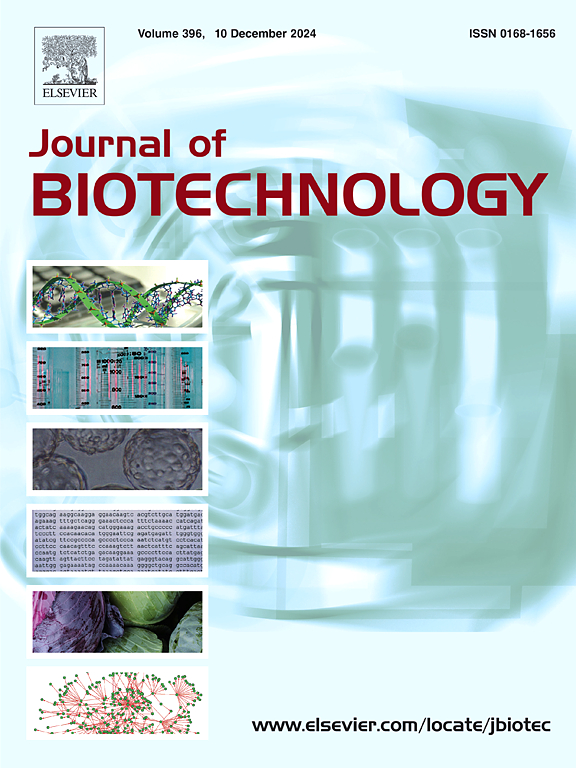Improved methanol utilization of Komagataella phaffii by rebuilding metabolic network based on new alcohol-aldehyde transformation system
IF 3.9
2区 生物学
Q2 BIOTECHNOLOGY & APPLIED MICROBIOLOGY
引用次数: 0
Abstract
Bioconversion based on methanol holds promise for advancing global carbon neutrality and mitigating the global food crisis. However, the limited efficiency of methanol utilization hampers methanol-based biomanufacturing in microorganisms. This study focuses on enhancing methanol utilization efficiency in Komagataella phaffii through the implementation of a novel alcohol-aldehyde conversion system based on the Adh900 protein. Results indicate a notable 14 % increase in biomass compared to the wild-type strain. Furthermore, analysis of the amino acid metabolism pathway underscores the significance of histidine in facilitating the methanol utilization pathway (MUTP). By combination of adding 120 mg/L histidine to the medium and optimizing promoter strategies, the dry cell weight (DCW) was up to 4.33 g DCW/L, which was increased by 63 %. The combination of these strategies has important research significance for methanol-based biological metabolism, and will further promote the microbial application of methanol. These findings are poised to advance the development of methanol-nutritive cell factories, thereby propelling the evolution of methanol biomanufacturing technology.
基于新醇醛转化体系的代谢网络重建提高了法菲小鹿草甲醇利用率
基于甲醇的生物转化有望推进全球碳中和和缓解全球粮食危机。然而,有限的甲醇利用效率阻碍了微生物中基于甲醇的生物制造。本研究的重点是通过建立一种基于Adh900蛋白的新型醇醛转化体系来提高法菲Komagataella phaffii的甲醇利用效率。结果表明,与野生型菌株相比,生物量显著增加了14 %。此外,对氨基酸代谢途径的分析强调了组氨酸在促进甲醇利用途径(MUTP)中的重要性。在培养基中添加120 mg/L组氨酸并优化启动子策略,可获得4.33 g DCW/L的干细胞重,提高63 %。这些策略的结合对于甲醇为基础的生物代谢具有重要的研究意义,并将进一步促进甲醇的微生物应用。这些发现有望推动甲醇营养细胞工厂的发展,从而推动甲醇生物制造技术的发展。
本文章由计算机程序翻译,如有差异,请以英文原文为准。
求助全文
约1分钟内获得全文
求助全文
来源期刊

Journal of biotechnology
工程技术-生物工程与应用微生物
CiteScore
8.90
自引率
2.40%
发文量
190
审稿时长
45 days
期刊介绍:
The Journal of Biotechnology has an open access mirror journal, the Journal of Biotechnology: X, sharing the same aims and scope, editorial team, submission system and rigorous peer review.
The Journal provides a medium for the rapid publication of both full-length articles and short communications on novel and innovative aspects of biotechnology. The Journal will accept papers ranging from genetic or molecular biological positions to those covering biochemical, chemical or bioprocess engineering aspects as well as computer application of new software concepts, provided that in each case the material is directly relevant to biotechnological systems. Papers presenting information of a multidisciplinary nature that would not be suitable for publication in a journal devoted to a single discipline, are particularly welcome.
 求助内容:
求助内容: 应助结果提醒方式:
应助结果提醒方式:


